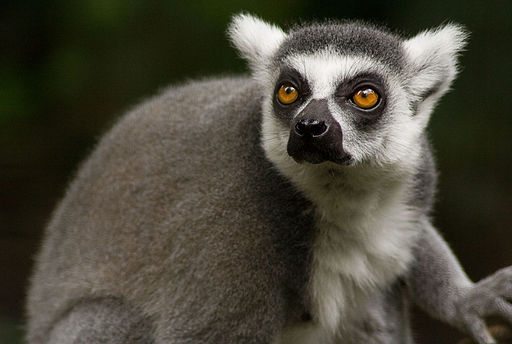Pet Trade Harming Lemur Conservation
The driving factors behind their decline include poaching for the bushmeat trade, a lack of conservation programmes and habitat destruction due to illegal logging, which is on the rise thanks to political instability and rising poverty.
 Image: By Rvb (Own work) [Public domain], via Wikimedia Commons
Image: By Rvb (Own work) [Public domain], via Wikimedia Commons Lemurs are the world’s most endangered primates, with 91% of species at risk of extinction on their native island home, Madagascar. Of 101 lemur species, 22 are classified as critically endangered, 48 are endangered and 20 are classified as vulnerable. The driving factors behind their decline include poaching for the bushmeat trade, a lack of conservation programmes and habitat destruction due to illegal logging, which is on the rise thanks to political instability and rising poverty.
Yet another factor that is threatening the lemurs’ survival is known but being somewhat ignored – the illegal pet trade. Scientists from Temple University in Pennsylvania published a paper in Oryx earlier this month in which they documented their study of pet ownership in Madagascar. They spent 3 months in the northern half of the country, surveying 1,093 households in 10 cities and 7 villages. Less than 3% of people surveyed admitted to owning a lemur at the time or in the past. Some admitted to owning a lemur but kept them only a short time – they either ate it or sold it to someone else – but many kept them for years. Scaling up these results, the scientists estimate that 28,253 lemurs were held in captivity over the past 3 years, and almost 10,000 of them were kept for 3 years or more.
Keeping lemurs as pets is illegal under Madagascar and international law, but enforcement of the law is weak. Lemurs can be obtained cheaply (for less than a typical day’s income), are kept by hotels, restaurants and, more worryingly, by government officials and those who are supposed to enforce the ban. Even researchers and conservationists who are aware of the problem tend to focus their efforts on mitigating other threats, such as deforestation.
Kim Reuters, a doctoral student who led the study, said: “We’ve been spending millions of dollars on lemur conservation in Madagascar, but despite spending all this money, no one has ever quantified the threat from the in-country pet lemur trade. If we’re spending these millions of dollars there to preserve these species, we should actually examine all the threats facing lemurs. Now that we know that lemur pet ownership is happening, and happening at this scale, it’s an issue that we can’t ignore anymore,” she said, adding that lemur pet ownership must be factored into future conservation efforts.
“If people are going to keep lemurs as pets, then more outreach, regulation and enforcement is needed to ensure healthier captivity for the lemurs, especially in the big cities. Conservation programs that don’t consider the pet trade of lemurs may unnecessarily increase their costs and risk extinction of the very lemur populations that they are trying to protect.”
Not all species are kept as pets – the aye-aye is considered a bad omen, so is avoided. But other species that are kept are especially at risk, such as the critically endangered and slow to reproduce ruffed lemur. Fourteen lemur species have populations of less than 10,000, so pet ownership could cause some populations to go extinct. And let’s not forget that lemurs are highly intelligent and social animals. Keeping them as pets is incredibly cruel.





No comments yet.